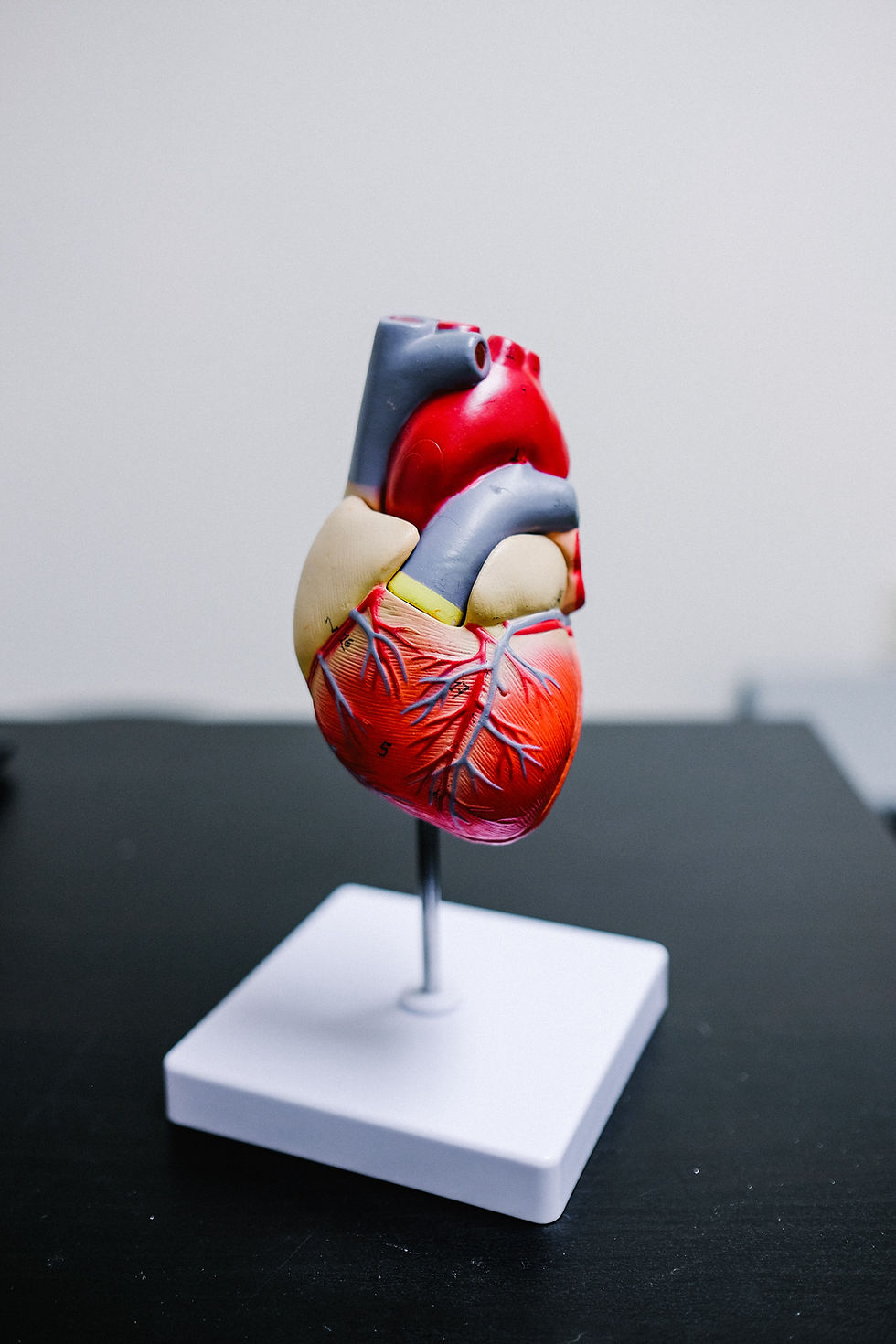10 reasons to lift weights – no matter your age or ability
- Lainey Greer

- Oct 17, 2019
- 5 min read
Updated: Nov 12, 2019

A couple things first…
Confession – I love lifting and hate cardio. If I could only lift, I would. But cardiovascular work is necessary, and I will post on it in the future.
And, let me say, lifting weights does not mean you need to buy a gym membership or become a bodybuilder. Gym access does help, but anyone can buy a few sets of dumbbells and search exercises for major muscle groups. So when I discuss lifting here, I’m talking to everyone – the dedicated athlete, stay at home mom, busy minister, retiree, etc.
Also, I need to clear up two myths about strength training. Ladies, do you really think lifting weights will make you look like Arnold Schwarzenegger? Unless you’re popping steroids and spending hours in the gym, this is physically impossible. And guys, do you skip leg day? Remember, legs are just as much as part of the body as your chest and biceps.
Ok, here are my 10 reasons for lifting, but just know there are others!
1. Bone mass density. Women, this is the most important reason for you! Honestly, if there were no other benefits to lifting outside of the impact to bone density, this alone is worth it for women. Bone mass density basically describes the strength of your bones. Remember the “Got Milk” commercials with famous people donning milk mustaches? And remember the tagline, milk does a body good? Milk has been promoted as being good for bones due to phosphorus, calcium, and vitamin D among other bone-friendly nutrients. And yes, milk is good for bones, but weight lifting is even better. Here’s why: Everyone – men and women – will reach peak bone mass density between the ages of 25-35. However dense your bones are at their peak will be the strongest they’ll ever be. After that, you will either maintain or decrease bone strength. The best way to maintain bone mass density is weight-bearing activity. Yes, cardiovascular work helps, but you need more than running for healthy bones. Lifting actually stresses bones. When stressed, osteocytes (bone cells) work to recover the bones from stress applied by the weight, making them stronger. But as we age, our bones can weaken and are more susceptible to breaking. Women, this is where lifting is absolutely critical for you. Menopause does a number on bones mainly due to decreasing estrogen levels. They begin to weaken at an even more rapid pace. When bones weaken, they can get tiny holes in them, becoming porous – this is called osteoporosis or its precursor, osteopenia. Weak bones mean breakable bones, a major concern later in life. So, guard against this now by lifting weights. But guys, you aren’t off the hook here either. Studies have actually shown men begin decreasing in bone mass density before women, making it crucial that both men and women lift weights for stronger bones.
2. Body composition. The best way to change body composition by decreasing fat mass and increasing muscle mass is to strength training. Keep in mind though that losing fat and adding muscle could mean less weight loss than expected because muscle weighs more than fat. So, a better gauge of progress is how your clothes are fitting instead of the number on the scale. Rapid weight loss typically comes from more drastic, unsustainable weight loss measures like severely restricting calories or slaving away on cardio machines. You will lose weight, but the question is how long can you keep it off if extreme measures were necessary to achieve it? Plus, in this way, your body composition will not change for the better. It’s likely you might lose muscle, and if you stop doing cardio and relax your eating, you’ll gain fat back not muscle. Body composition is changed for the worse in this case. This is why a combination of lifting weights, interval cardiovascular training, and sustainable healthy eating is the best for long term health and weight maintenance.
3. Become a calorie-burning machine. Yes, you can make your body a calorie-burning machine! The more muscle you have, the more calories you need to consume. Good calories – whole grains, lean meats, and good fats – not processed, sugary, fried foods. So, adding muscle mass to your body means you can, and need, to eat more. This is because muscle is active and constantly burns calories, whereas fat mass is inactive and just sits there.
4. Increase functional abilities. Maybe you can get up and down stairs easily now. Maybe you don’t have trouble getting up from sitting on the floor. Maybe you only need one trip to carry all your grocery bags in now. But these everyday activities get harder as we age. Lifting weights helps maintain our ability to complete these everyday, functional activities. Building strength makes going up stairs, getting up off the floor, and carrying lots of bags easier.
5. Better posture. Lifting weights fight bad posture because it strengthens back muscles. With everyone on a cellphone or tablet these days, bad posture is a growing problem. A few years of bad posture combined with weakening bones down the road, and you’re looking at the likelihood of a serious hunchback. Bones can compress in a weakened cervical spine, creating the hunchback look we’ve all noticed before. However, bad posture earlier in life could develop into a hunchback at a much younger age. Lift weights to guard against this while you’re still able!
6. Improve sleep and build confidence. Weight lifting and exercising, in general, has shown to improve your quality of sleep. Who doesn’t need more sleep?! Plus, lifting weights boosts your confidence. Feeling stronger, changing your body composition, and gaining better posture can all make you more confident about yourself.
7. Decrease the chances of obesity and type II diabetes. With strength training, muscle mass increases and fat mass decreases, which in turn, lessens the chance of obesity. As more calories are burned (remember muscle tissue is active), that’s fewer excess calories the body has to store as fat. Chances of developing type II diabetes also decreases with weight lifting. In this disease, the body cannot utilize excess amounts of sugar levels in the blood. Sadly, type II diabetes is extremely prevalent in our country, with 1 in 3 people prediabetic. But when muscles are working from exercise, they need glucose (sugar in the blood) for energy. So, if there is extra sugar in the blood, much of it will be utilized by the muscles to sustain weight lifting activity.
8. Decrease recovery time from injuries and giving birth. This reason might not seem important, but it is truly huge. Stronger muscles mean stronger bones, tendons, ligaments, and joints, which lessen the likelihood of major injury. Also, if you have been lifting weights before and during pregnancy, the recovery process after birth won’t be as hard or take as long.
9. Develop balance and coordination. Like functional abilities, balance and coordination also decrease with age. Not to mention, balance and coordination are naturally harder for your non-dominant side. Lifting weights, particularly dumbbells, will increase balance and coordination. Plus, if you perform certain movements like a shoulder press or bicep curl standing on one foot, your balance will also improve. Another aspect of this is that lifting helps correct muscle imbalances. For most people, their dominant side is stronger than their non-dominant side. By using dumbbells (instead of a weight machine), where both right and left sides work separately, imbalances can be overcome.
10. God designed weight training to make our bodies better. I cannot emphasize this strongly enough. In future posts, I will explain the body’s adaptations to exercise. But for now, if you are a believer, this will hopefully motivate you to begin strength training.
One last thing – I frequently tell my clients that at some point you’ll either deal with an injury or chronic disease. If you don’t work out, you will likely develop chronic disease. If you work out, you will likely deal with an injury at some point. This certainly doesn’t mean there won’t be overlap, but the principle holds – which will you choose?




Comments